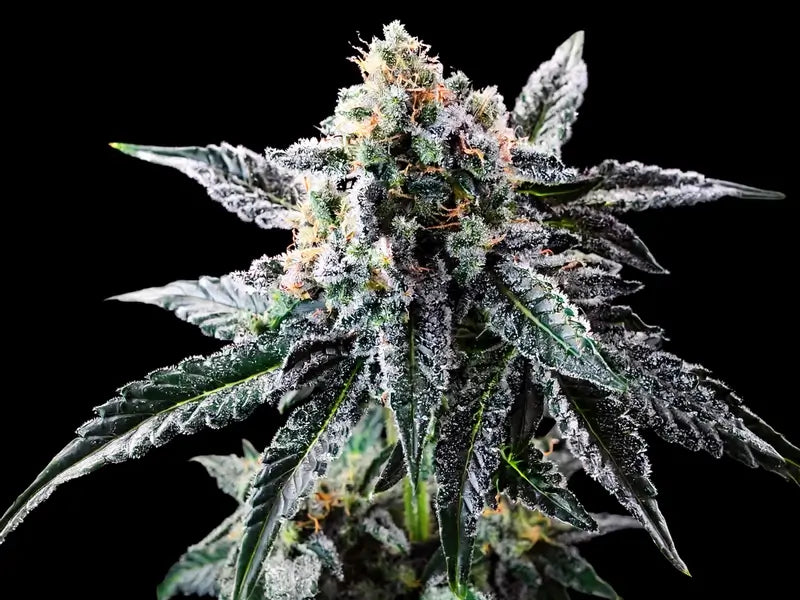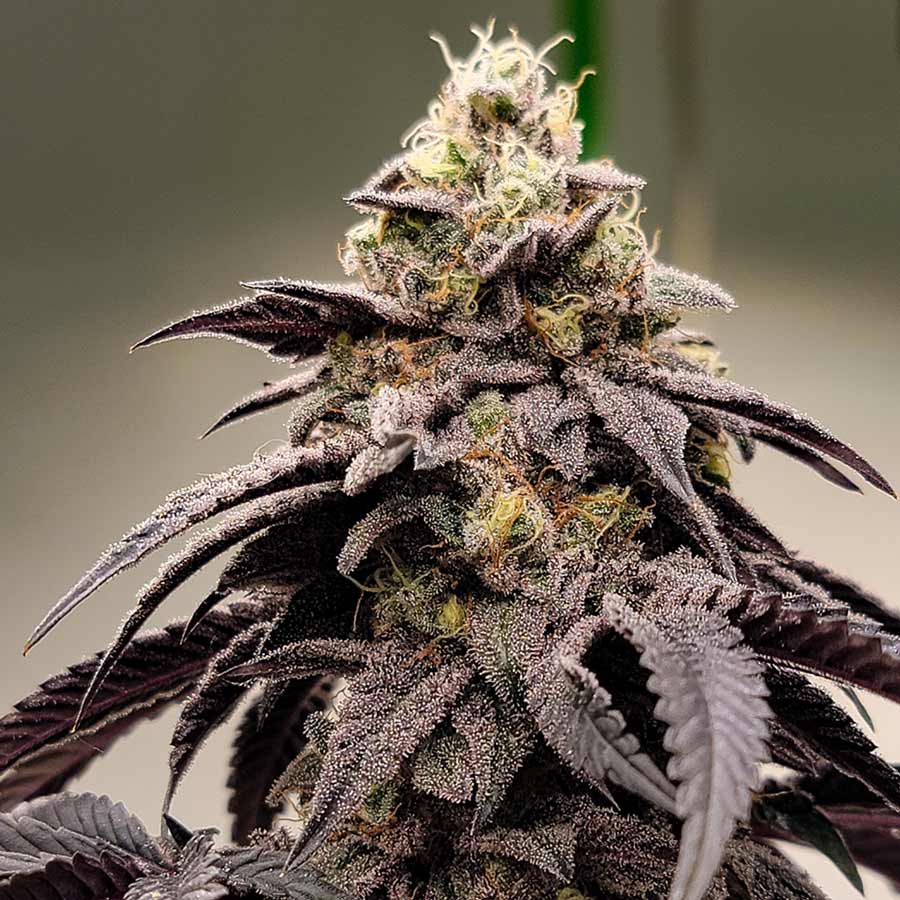Sexing Marijuana Plants: 5 Tips for Easier Identification

When growing cannabis, one of the earliest and most crucial steps is determining the sex of your plants. Male and female cannabis plants serve very different purposes — female plants produce the prized buds rich in cannabinoids, while male plants generate pollen that can unintentionally fertilize your crop.
For growers seeking to maximize yield and quality, identifying plant sex early is key. In this guide, we’ll cover practical tips and signs to help you master sexing marijuana plants with confidence, ensuring you get the most out of every seed.
Overview on Marijuana Plant Sex
Marijuana plants can be male, female, or occasionally hermaphroditic. Understanding cannabis plant sex is essential because only female cannabis plants develop the resinous buds used for consumption.
Male cannabis plants, on the flip side, produce pollen sacs and are primarily used for breeding purposes. Identifying the sex early in the growing cycle helps prevent accidental pollination, which reduces bud quality and yield. Growers working with regular seeds must be especially attentive, as these can produce both male and female plants.
How to Identify Cannabis Plant Sex Easily
Sexing your cannabis plants doesn't have to be overwhelming. With a close eye and some basic knowledge, you can recognize whether your plants are male or female — even in the early stages of growth. Here are expert-backed steps to guide you:
1. Observe the Pre-Flowers During Early Growth
Pre-flowers are small structures that begin to form where branches meet the main stem, usually between the 4th and 6th week after germination. This is the first sign of a plant’s sex.
Expert Tip: Use a magnifying glass to inspect pre-flowers closely. Female pre flower structures look like tiny tear-shaped calyxes with white hairs (pistils), while male pre flowers appear as small round balls (pollen sacs) without hairs.
2. Look for White Hairs or Pollen Sacs
One of the sure signs of a female plant is the appearance of white hairs protruding from the calyx, which eventually develop into female flowers (buds). In contrast, male plants form clusters of pollen sacs that resemble tiny grapes.
Expert Tip: Take pictures showing both male and female pre-flowers to compare with your own plants. This visual reference can make identification much easier for new growers.
3. Know When to Sex Your Plants
Cannabis plants typically show their sex between the 4th and 6th week of vegetative growth, or within two weeks after the light cycle is adjusted to initiate flowering.
Expert Tip: If you’re growing cannabis indoors, flip the light cycle to 12/12 (12 hours of light, 12 hours of darkness) to speed up the flowering stage and help reveal plant sex sooner.
4. Use Feminized Seeds to Avoid Male Plants

Feminized cannabis seeds are bred to produce only female plants, eliminating the guesswork involved in sexing marijuana plants.
Expert Tip: While feminized seeds reduce the chance of male plants, always inspect your plants anyway — especially if they’ve experienced stress, which can lead to hermaphroditism.
5. Consider Early Sex Testing
For those growing many plants or high-value strains, early genetic sex testing can determine plant sex within the first few weeks after germination.
Expert Tip: Labs can test a tiny leaf sample for the Y chromosome — a clear indicator of male genetics — long before any visible pre-flowers develop.
Why You Need to Identify Marijuana Sex Early
Identifying the sex of your marijuana plants early is crucial to protecting your harvest and ensuring the highest possible quality. Failing to separate male and female plants in time can lead to accidental pollination, reduced bud production, and wasted time and resources. Here are the key reasons to sex your cannabis plants as early as possible:
- Prevent Pollination: Male plants can pollinate females quickly, leading to seed-filled buds instead of usable flowers.
- Maximize Bud Production: Removing male plants allows female plants to focus all energy on producing large, resinous buds.
- Maintain Strain Purity: Early identification helps avoid cross-pollination between different strains, preserving genetic integrity.
- Optimize Garden Space: Removing unwanted male plants gives you more room and resources for female plants to thrive.
- Improve Product Quality: Seedless female flowers (sinsemilla) are more potent and preferred for consumption or processing.
Male Vs Female Cannabis Plants
Here’s a detailed comparison table to help you clearly distinguish between male and female cannabis plants based on visual traits, growth behavior, and purpose in cultivation:
|
Feature |
Male Cannabis Plants |
Female Cannabis Plants |
|
Primary Role |
Produces pollen for breeding |
Produces buds for consumption |
|
Pre-Flower Appearance |
Small round sacs (pollen sacs) |
Tear-shaped calyx with white hairs (stigmas) |
|
Flowering Traits |
No resinous buds; forms clusters of pollen sacs |
Develops sticky, resinous buds with trichomes |
|
Use in Cultivation |
Mostly for creating seeds and crossbreeding |
Preferred for harvest and medicinal/recreational use |
|
Identification Timing |
Shows sex slightly earlier than females |
Takes a bit longer to show sex |
|
Growth Behavior |
Taller, thinner with fewer leaves |
Bushier with more branching and leaf production |
|
Pollination Risk |
High; can pollinate multiple female plants quickly |
Can be pollinated, leading to seed development |
|
Desirable Outcome |
Used selectively in controlled breeding |
Grown for potent, seedless buds (sinsemilla) |
|
Genetic Indicator |
Carries Y chromosome |
Carries two X chromosomes |
Final Thoughts

Learning how to identify the sex of your cannabis plants is one of the most important skills any grower can develop. Early detection helps preserve bud quality, ensures stronger genetics, and protects your overall yield.
Whether you're growing weed for personal use or starting a larger cannabis cultivation setup, being proactive about sexing your marijuana plants will save you time and effort in the long run. Ready to start growing smarter? Begin with quality seeds and keep a close eye on those pre-flowers.
Stay informed, keep observing your plants closely, and continue building your knowledge to ensure a more successful grow every season.
Frequently Asked Questions
Can a female plant turn into a male?
No, but under extreme stress, a female cannabis plant can develop male flowers and become hermaphroditic. This can lead to self-pollination and reduced bud quality.
How do I avoid male plants entirely?
The best way is to use feminized cannabis seeds, which are bred to produce only female plants. While not 100% guaranteed, they significantly reduce the chances of male growth.
What happens if a male plant pollinates a female plant?
The female will begin producing seeds instead of focusing energy on resinous buds. This lowers the potency and quality of the harvest.
Are hermaphrodite plants usable?
Hermaphrodites can still produce buds, but there's a risk of self-pollination and seedy flowers. Most growers remove them to protect nearby female plants.
Can I sex my plants during the seedling stage?
Not visually. True visual indicators don’t appear until the pre-flowering stage. However, early genetic testing can determine plant sex from leaf tissue within a few weeks after germination.



